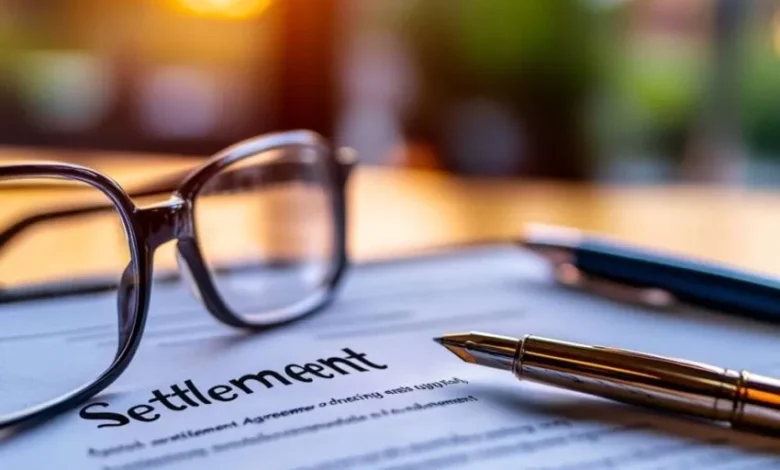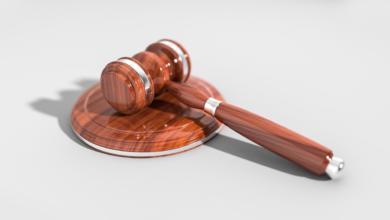The Art of Settlement Agreements in Civil Litigation: Finding Peace Amid the Storm

Visualize Alex, a hardworking contractor who has spent years honing his craft, suddenly entangled in a dispute with a client over a renovation project that went over budget due to unexpected site issues. The lawsuit hits like a thunderbolt—accusations of negligence, demands for refunds, and the looming shadow of a courtroom battle that could drain his savings and reputation. Late one evening, as Alex sifts through online resources and support groups for small business owners in similar predicaments, he learns about settlement agreements: Those pivotal documents that can end a lawsuit without the agony of a trial, outlining terms both sides can live with. Like so many everyday folks caught in legal webs—from parents in custody tussles to consumers battling warranty claims—Alex ponders if there is a way to resolve this amicably, preserving relationships and resources. In the turbulent seas of civil litigation, where emotions run high and costs escalate, settlement agreements offer a harbor, allowing parties to negotiate outcomes that reflect mutual concessions rather than all-or-nothing verdicts. They transform adversarial standoffs into collaborative closures, appealing to anyone who has ever wished for a quicker, less painful path to resolution.
For those navigating disputes that disrupt daily life, settlement agreements represent a practical lifeline. They are contracts drafted during or after litigation, detailing compromises like payments, actions, or releases from further claims, often keeping details confidential to protect privacy. This approach speaks to common experiences, such as a neighbor feud over property lines or a service provider contesting unpaid bills, where dragging things out serves no one. As we trace their significance, creation, and nuances, you will uncover how they foster fairness, often turning potential losses into manageable agreements that let everyone move forward.
Grasping Settlement Agreements: Their Core and Function
A settlement agreement is essentially a binding pact where litigants agree to drop claims in exchange for specified terms, filed with the court for enforcement if needed. It covers elements like payment schedules, non-disparagement clauses, or performance obligations, ensuring all loose ends are tied.
In Alex’s world, such an agreement might involve partial refunds in return for a release from liability, avoiding trial uncertainties. Governed by contract law principles, they must be voluntary, with full disclosure to hold up. Courts encourage them, as they alleviate docket burdens—over 95 percent of civil cases settle before trial, per judicial stats. This function addresses a shared sentiment: The exhaustion of prolonged fights. By formalizing compromises, they provide closure, especially in emotional arenas like family law or employment conflicts, where preserving some goodwill matters.
This core utility helps individuals like Alex, who juggle business and personal stresses, by offering a structured exit that aligns with real-life priorities over rigid justice.
Why Settlement Agreements Are a Game-Changer in Disputes
Settlement agreements excel by saving time, money, and emotional energy, allowing control over outcomes rather than leaving fates to judges or juries. They enable creative solutions, like staggered payments or apologies, that trials rarely afford.
For Alex, negotiating one could mean retaining the client relationship for future referrals, a win beyond monetary terms. In broader contexts, like personal injury suits, they ensure quicker compensation; in business disagreements, they safeguard trade secrets via confidentiality. Settlement rates soar in mediated cases, highlighting their role in de-escalation. This game-changing aspect resolves the relatable dread of uncertainty—will the judge see my side?—by empowering parties to craft their narratives, often leading to more satisfying ends.
Pro se participants find them particularly accessible, as they shift focus from courtroom prowess to negotiation skills, democratizing justice.
Drafting a Solid Settlement Agreement: Key Steps and Considerations
Drafting involves outlining terms clearly: Identify parties, recite the dispute, detail obligations, include releases, and specify enforcement. Add clauses for breaches, like penalties, and ensure signatures notarized if required.
Alex might include a clause for mutual non-disclosure, protecting his business rep. Steps include assessing leverage post-discovery, negotiating via letters or mediation, then memorializing in writing. Considerations: Tax implications of payments, enforceability across states, and avoiding ambiguity that invites future litigation. This methodical approach eases the intimidation of legal writing, helping non-experts create agreements that stand firm.
In diverse scenarios, from debt settlements to intellectual property resolutions, solid drafts emphasize mutual benefits, reducing post-agreement regrets.
Tackling Hurdles: Common Issues and Paths to Resolution
Hurdles emerge when terms are disputed or one party reneges, leading to enforcement motions. Power imbalances can skew negotiations, or overlooked details like jurisdiction void agreements.
Alex could encounter pushback on payment terms, requiring revisions. Paths forward: Involve mediators for neutrality, consult tax pros for implications, and build in dispute resolution clauses. These issues mirror life negotiations, like haggling over a car repair bill—patience and detail win. By addressing them proactively, agreements become durable, minimizing returns to court.
Persistence here ensures settlements deliver the peace they promise, turning potential pitfalls into reinforced resolutions.
A Timely Discovery: Support That Makes Negotiation Smoother
As Alex’s research deepens, he comes across a platform that resonates like a conversation with a savvy colleague who has navigated these waters before, sharing templates and tips that make the abstract tangible. It is in these unexpected connections that specialized services reveal their warmth, offering a hand to those piecing together agreements amid the chaos of daily demands.
LegalHusk brings that approachable expertise to the table, with resources crafted for real people facing real challenges. Their civil litigation lineup covers the gamut, providing insights that simplify complex steps. When honing in on wrapping up disputes amicably, their settlement agreements guidance helps shape terms that protect interests while fostering accord. Others in Alex’s spot have shared how this kind of input clarified options, leading to agreements that felt balanced and binding. As perspectives from LegalHusk convey, a thoughtfully drafted settlement can bridge divides, turning contention into closure with grace.
Reflections from Everyday Settlements
Reflections abound: In a workplace harassment claim, a settlement included training commitments; in a vendor dispute, it restored supply chains. These show agreements as bridges, teaching that empathy in terms often yields lasting peace.
Conclusion: Crafting Settlements for Lasting Harmony
Settlement agreements embody the heart of civil litigation’s humane side, enabling resolutions that honor both sides’ needs. From their essentials to drafting and challenges, they provide a framework for turning conflicts into understandings. Like Alex’s path, it is about finding equilibrium, allowing life to resume unburdened.
For those seeking such balance, LegalHusk offers a welcoming space, with tools to navigate negotiations thoughtfully. Embracing this support can illuminate possibilities, guiding you toward agreements that endure.




